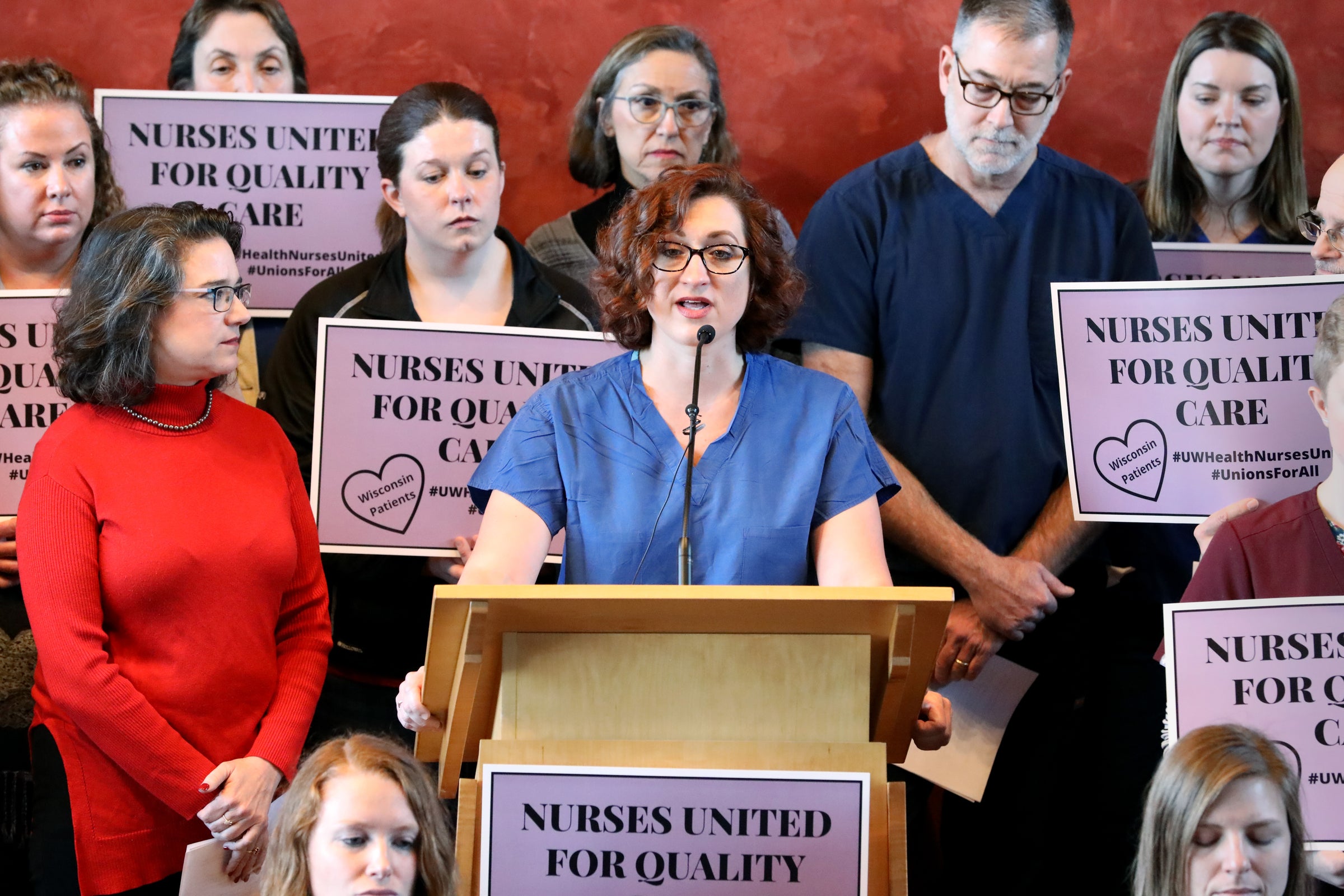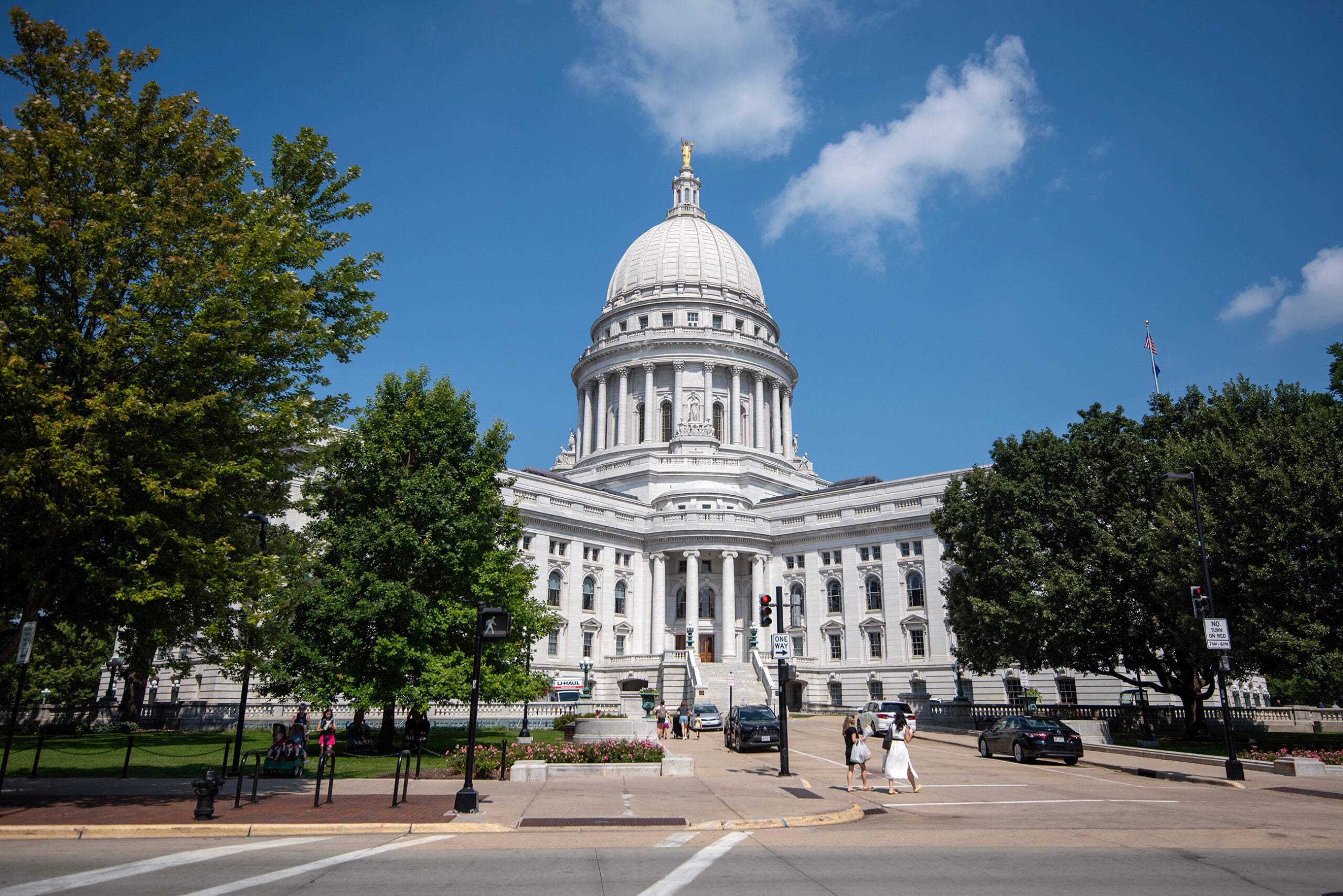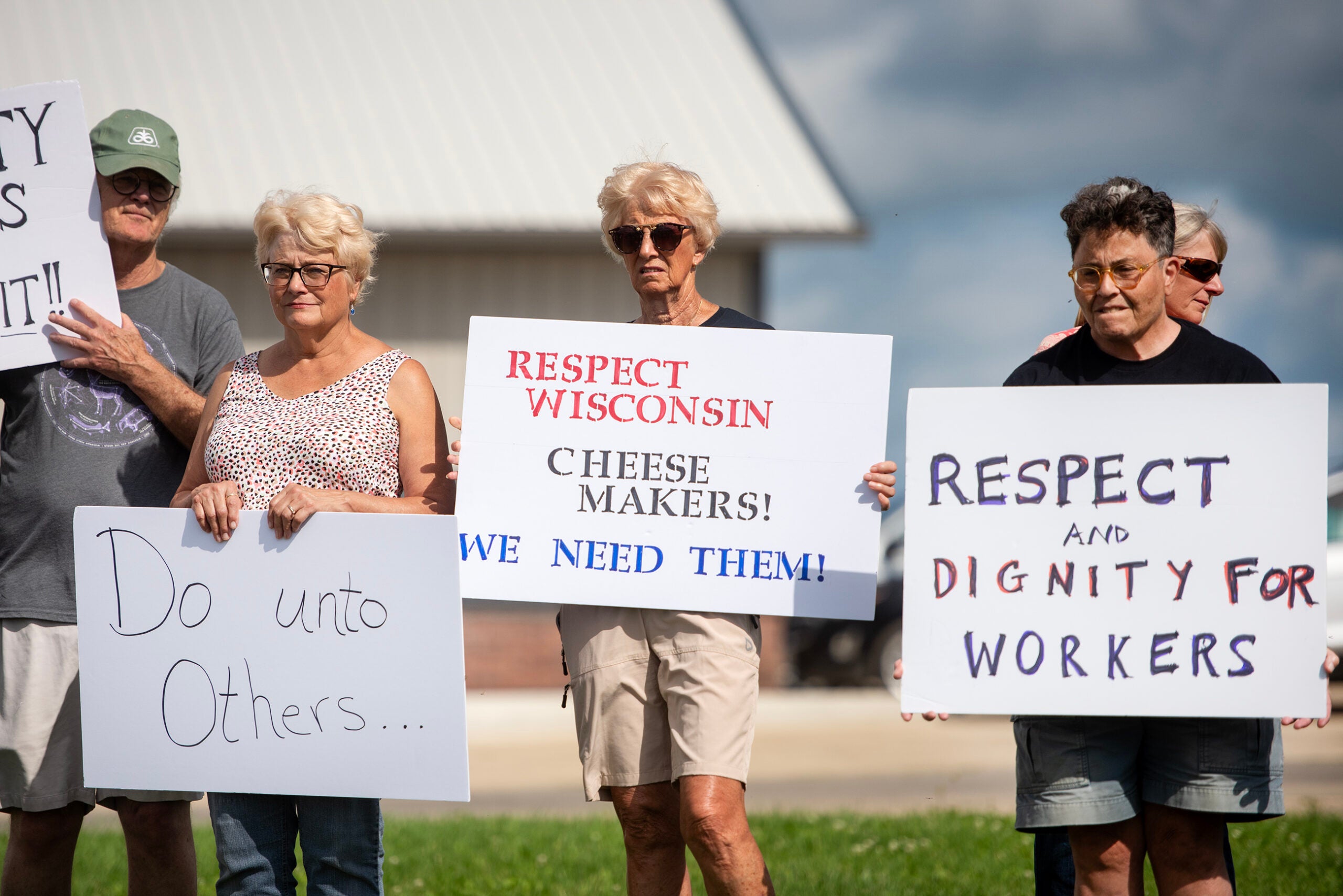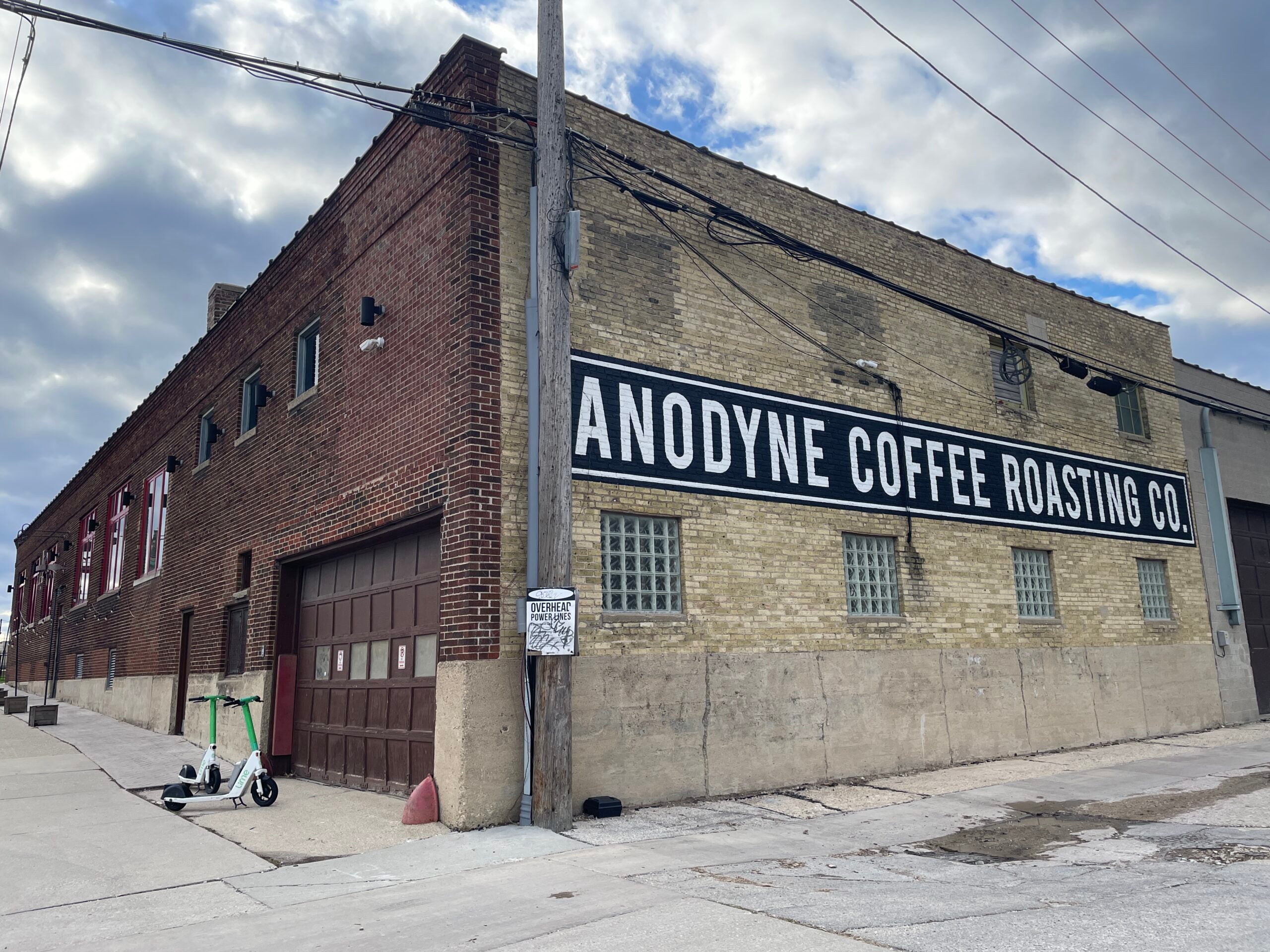Kevin Gundlach, president of the South Central Federation of Labor in Madison, said his office phone has been ringing constantly from workers seeking advice on unionization. He estimates employees from some 20 private sector workplaces in his 11-county region around Madison have sought to organize this year.
“This is the first time we’ve seen this level of interest,” he said. “There is no doubt. We’ve never seen this before.”
A wave of Republican laws over the past decade cratered union membership in Wisconsin, but recent private and public sector worker mobilization has demonstrated the staying power of organized labor.
News with a little more humanity
WPR’s “Wisconsin Today” newsletter keeps you connected to the state you love without feeling overwhelmed. No paywall. No agenda. No corporate filter.
Labor membership in Wisconsin fell dramatically after the passage of Act 10, the anti-public sector collective bargaining bill in 2011, with the sharpest decrease in the nation over the next decade. As of 2021, Wisconsin reached a new low just shy of 8 percent of the total workforce unionized. Over the past decade, Wisconsin unions lost 124,000 members, or about a third of their ranks, driven largely by the death of public sector unions.
“I don’t think any other state lost almost half their membership in one fell swoop the way that Wisconsin did,” said University of Wisconsin-Madison Professor Emeritus David Nack, who specializes in labor issues.
But amidst a labor shortage, private and public sector workers are notching wins across the state as they organize against outsourcing, budget cuts and what they consider threats to academic freedom in local schools.

Gundlach said private sector workers are complaining of worsening conditions with the proceeds of their labor padding executive salaries and enriching corporate stock investors.
“They’re making record profits,” he said. “And they’re not helping out the workers and the families within our communities.”
Gundlach was once a unionized Dane County employee. But Act 10 changed all that, stripping his union of many of its core powers and limiting its ability to bargain for raises, benefits and safe working conditions. The law requires a majority of all employees to vote to re-certify their union each year, a frustrating hurdle that caused many public sector unions to disband.
In Madison, the American Federation of State, County and Municipal Employees (AFSCME) lost more than half of its membership in the past five years going from 11,062 in 2016 to just 4,848 this spring.
But rather than fade away, some unions switched to become nontraditional employee associations. While they can’t collectively bargain over a contract, they can speak with one voice over working conditions.
Many county employees are now members of Dane County Employee Group 720 — a move endorsed by the Dane County Board, which codified the right for county workers to self-organize in an ordinance.
There continues to be friction: the Wisconsin State Journal reported this summer that Shawn Tessman resigned abruptly from the county’s Department of Human Services and criticized elected officials for siding with organized employees who called into question the judgment of management.
Privatization efforts thwarted
How far Act 10 goes to limit the power of organized labor in higher education is still playing out more than a decade later. In Oshkosh, about 100 university custodians and groundskeepers faced the threat of layoffs after the UW-Oshkosh signaled it intended to outsource the work to a Tennessee-based company.
“Recruitment and retention of dedicated custodial and groundskeeping employees remains difficult in this economy,” Chancellor Andy Leavitt wrote in an open letter to students and workers, explaining why the university had been exploring the move to a private vendor.
But after students and faculty picketed and delivered multiple petitions, with at least 1,000 total signatures, the university administration abandoned the idea.
One of the forces behind the effort was a local chapter of the American Federation of Teachers-Wisconsin that doesn’t have legal standing to collectively bargain for contracts for faculty members due to Act 10.
“We have broad First Amendment rights to organize and advocate for our working conditions,” said AFT-Wisconsin Vice President Jon Shelton, an associate professor at UW-Green Bay. “And so we’ve been able to do some pretty interesting things to build power on our campuses in the past few years.”
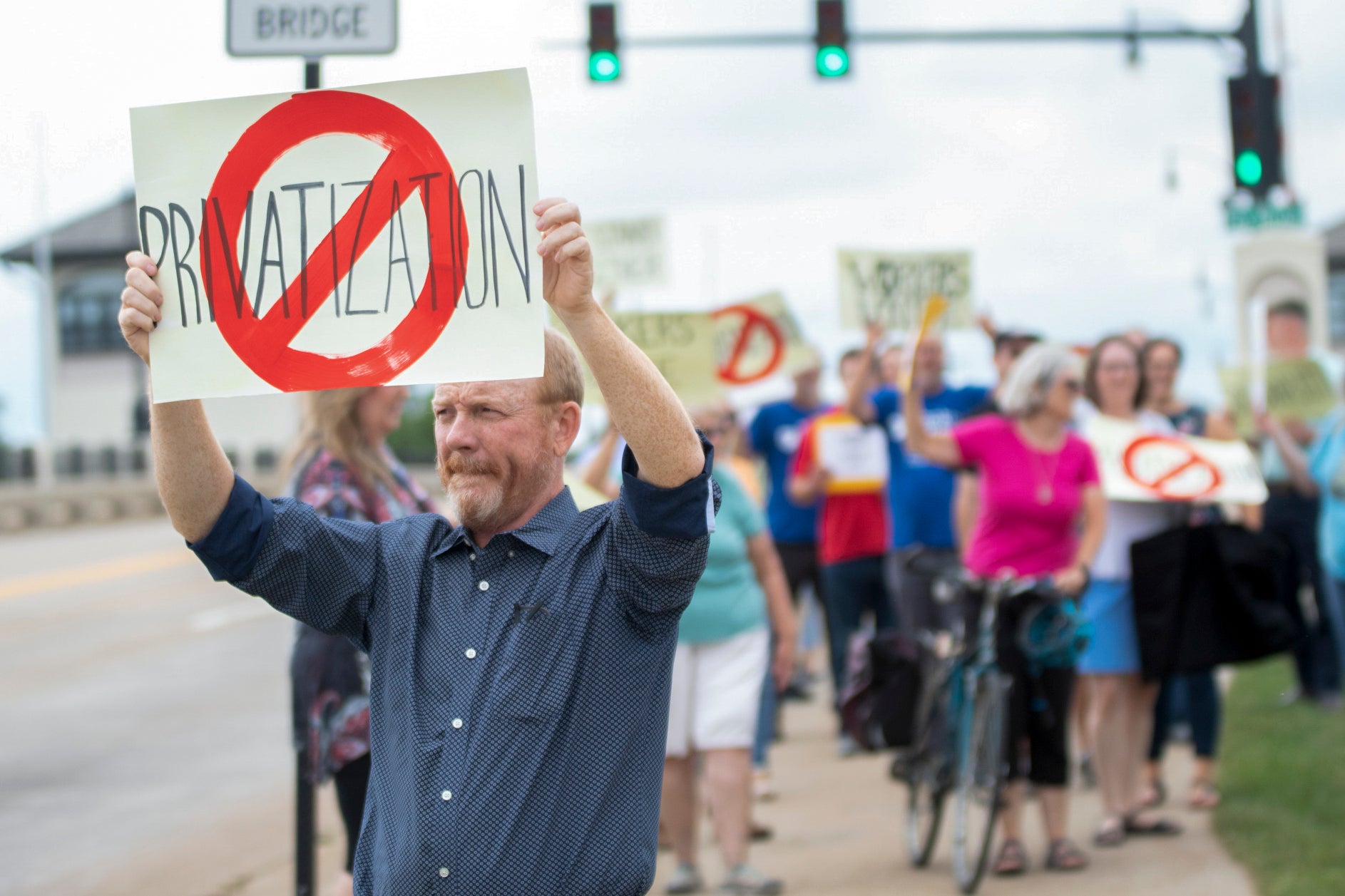
The custodians and groundskeepers had once been unionized but lost certification several years back, said David Siemers, a UW-Oshkosh professor and co-president of an AFT-Wisconsin affiliated union on campus. A major fear was that the workers would lose their state benefits, including health care coverage, if their jobs were privatized.
“If we hadn’t spoken up and if others hadn’t spoken up, I think they’d have liked to simply wash their hands of a management problem,” Siemers said.
He attributed the lack of retention to the wider problem of stagnant wages for state employees despite a multi-billion dollar budget surplus.
“The state needs to understand that it needs to pay more money in order to hire successfully,” Siemers said.
Another union-led effort helped scuttle a similar outsourcing plan at UW-River Falls.
“Our locals are being creative about how to build power,” said Shelton of UW-Green Bay. “It’s not like, ‘Oh, we can’t collectively bargain in a meaningful way. So let’s just not do anything and wait for collective bargaining to come back.’ What a union does is it builds power in the workplace. And that’s what our locals are doing.”
Threatened strike brings breakthrough
In perhaps the most high-profile recent example, more than half of Madison-based UW Health’s 2,600 nurses threatened to strike after their quasi-public employer refused to recognize their union.
UW Health — whose governing board is a mix of appointees of the Legislature and governor — argued that Act 10 precludes it from recognizing the union after its last contract expired in 2014.
UW Health registered nurse Tami Burns said one motive for unionizing was to have more say in daily operations inside the hospital.
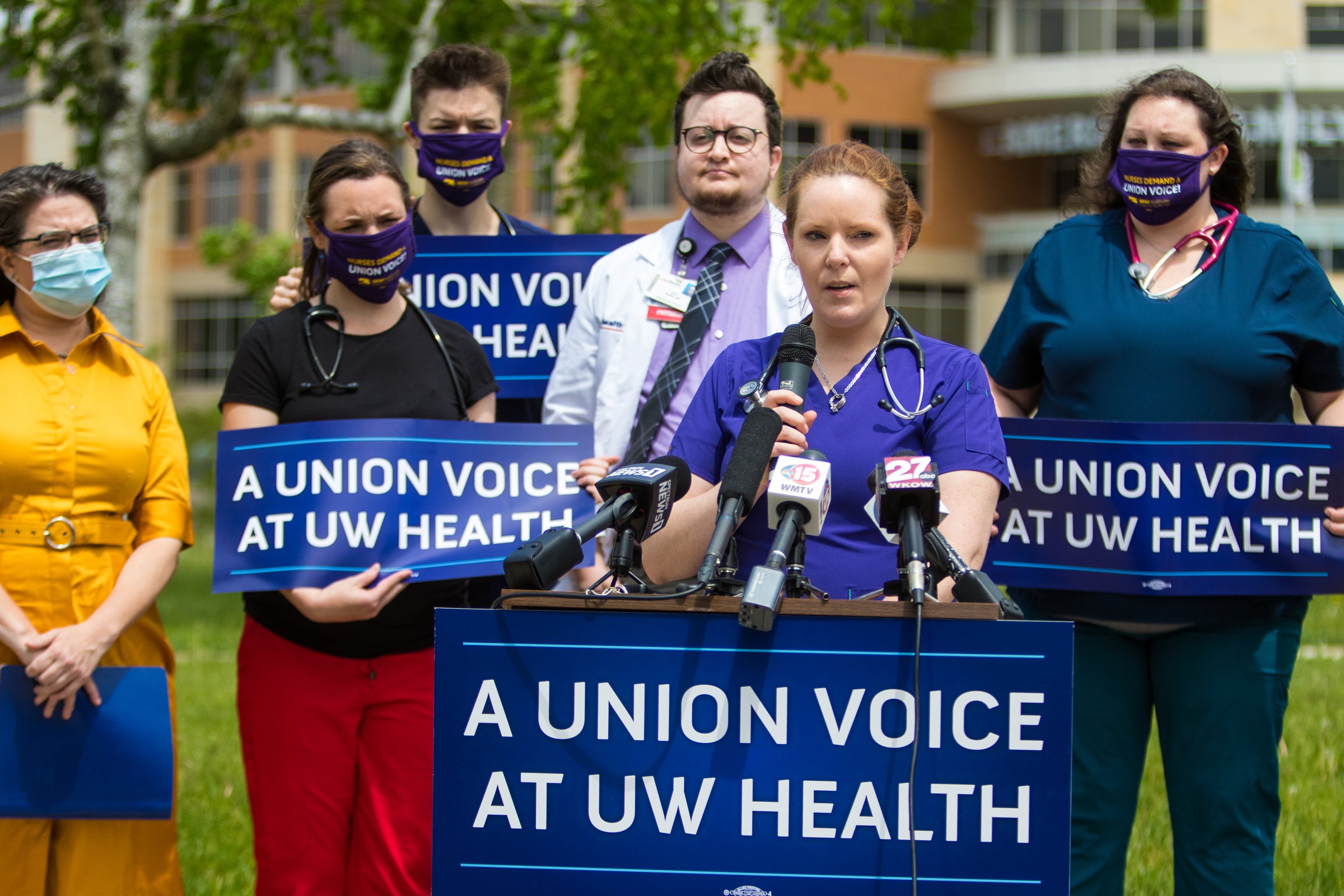
“I mean, the policies that are made are made by people who don’t do the job every day,” she said.
Burns has worked in the vascular surgery section of University Hospital in Madison since 2017. She said managers have complete control over their section with nurses unable to speak up if they have concerns.
She said employees have no right to have an advocate in the room if they’re being disciplined by a manager. And if they are sanctioned and want to challenge it, “it’s the same person who disciplines you, that reviews it. So I’m sure you can see where that goes: nowhere.”
The end result, she said, is that nurses have few protections and find it difficult to have a voice in the hospital wards and to advocate on behalf of their patients.
“That’s a huge part of a nurse’s job,” Burns said. “It’s in our code of ethics that we have to advocate for patients, and it makes it really hard to do that.”
After employees threatened a three-day strike — and Democratic Gov. Tony Evers intervened to broker a resolution — UW Health administrators softened their stance, asking the Wisconsin Employment Relations Commission to rule on whether the nurses can organize under Act 10.
Private sector unionization underway
Unionization has increased across the nation, but it’s unclear whether Wisconsin’s private sector is following that trend. The National Labor Relations Board announced a 58 percent increase in petitions nationwide this summer over a nine-month period.
But an analysis of petitions filed in Wisconsin over the same period show the increase was modest — 21 petitions filed compared with 17 during the same period a year earlier. Eight of those recent petitions were by Starbucks coffee shop employees in places including Madison, Milwaukee and Appleton.
Indeed, since 2011, the rate of petitions has mostly decreased. It spiked with 44 workplace petitions in 2014 but since then it has been less than 30 a year.
Gundlach, with the South Central Federation of Labor, said these figures aren’t keeping pace with the activity he’s seeing in his region.
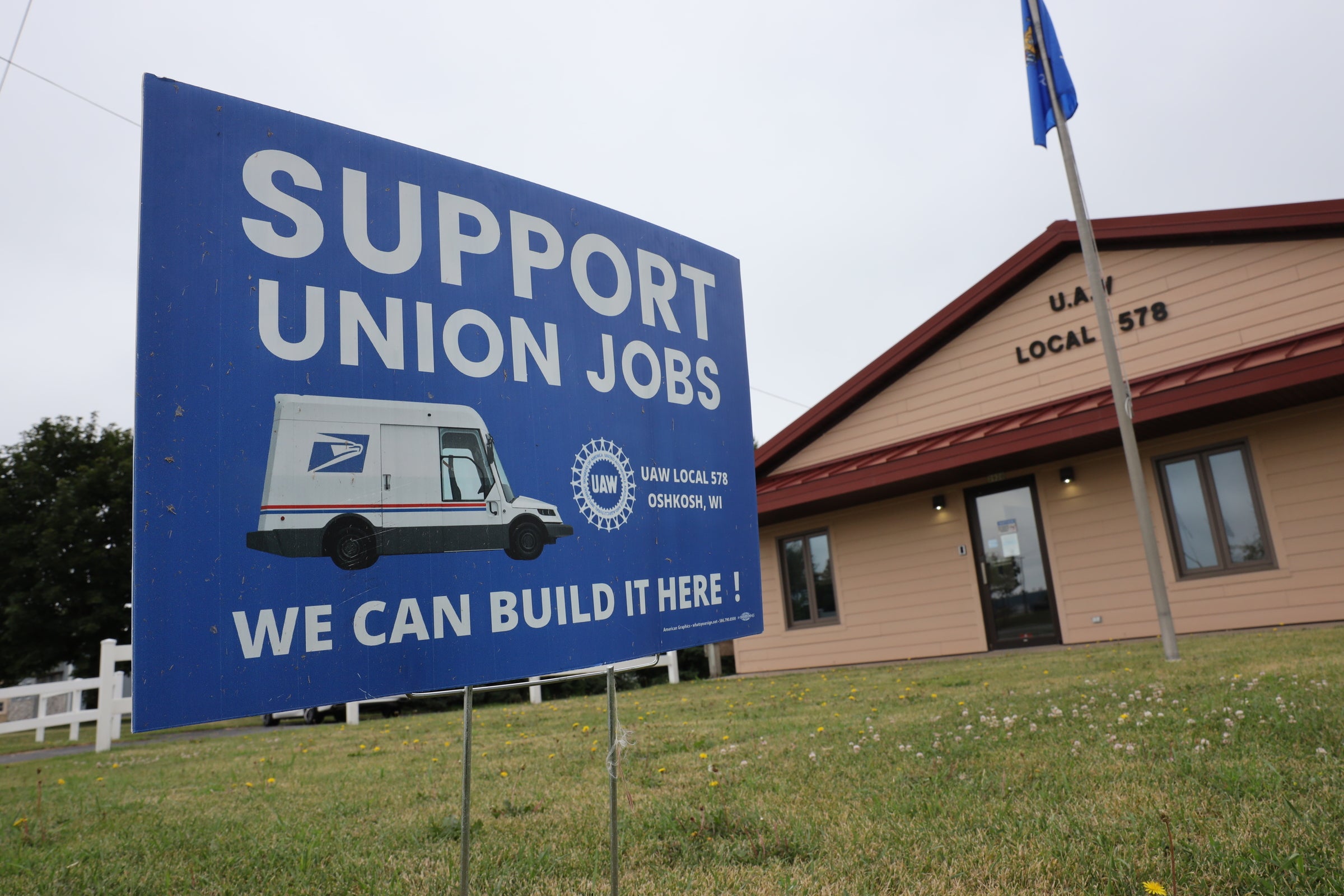
“It took one group of workers six to eight months with me meeting with them,” for them to be willing to approach a union, he said. “The actual vote that will occur could take a year or longer, because there’s a lot of organizing that gets done within the workplace before they even go public.”
Coming out of the pandemic’s lockdowns has caused many workers to reassess their value as front-line essential workers in services, trades and manufacturing.
“Workers have a sense of the leverage and the value they have,” said labor economist Laura Dresser, an associate director for the Center on Wisconsin Strategy (COWS) at UW-Madison. “You can see that in the high rate of churn.”
In its State of Working Wisconsin report for 2022, COWS sought to dispel the notion that Wisconsinites are staying out of the workforce. Participation in the labor market is actually higher now than pre-2020, with more than two-thirds of working age Wisconsinites in the workforce.
That’s several points higher than the 62 percent national average.
Organizing in schools
In public education, Wisconsin teachers unions are galvanizing members who say their academic freedom is under threat by conservative critics who want to censor their lesson plans.
In the Superior School District parents filed a complaint over fifth graders being taught about gender identity.
Shelton credited AFT-Wisconsin’s local in Superior with organizing parents and community members to speak in defense of a 30-minute presentation used to teach fifth graders about gender identity.
Minutes from an August 2022 school board meeting show that 30 people defended the curriculum against the six who criticized it. Ultimately, the school board voted 5-2 to keep the curriculum in place.
“Without support, oftentimes a lot of people will be afraid to teach things,” Shelton said. “We think we’ve really been able to impact things over the past few years, in spite of the very significant legal limitations we have against us.”
Future remains unclear
Labor experts and leaders say there’s a renewed energy across public and private labor sectors as employees increasingly push back against a long period of stagnant wages, rising costs of living and shrunken benefits such as health insurance and paid time off.
It remains unclear whether Wisconsin worker leverage is here to stay. A recession could lead to higher unemployment and dilute the relatively strong position of employees.
But some labor experts predict the momentum will continue as more workers experience the real gains from organizing for better conditions.
“Workers are always going to advocate for equity and voice in their workplace,” said Professor Michael Childers, co-chair of UW-Madison’s School for Workers, “regardless of whatever legal constructs exist to assist or thwart them.”
Jacob Resneck is a Report for America corps member. The nonprofit Wisconsin Watch collaborates with WPR and other news media and the University of Wisconsin-Madison School of Journalism and Mass Communication. All works created, published, posted or disseminated by Wisconsin Watch do not necessarily reflect the views or opinions of UW-Madison or any of its affiliates.
Glossary of terms related to Wisconsin unionsAct 10: The 2011 law signed by Republican Gov. Scott Walker that limited collective bargaining for non-public safety public employees to inflationary wage increases. Previously employees could bargain over benefits, working conditions and higher wages. The law also required affected employee unions to hold annual recertification votes in which a majority of all members must agree to retain their union. It also required certain public employees to pay higher pension and health insurance premiums. Living wage ordinance: Before 2018, some Wisconsin cities set minimum base wages above the state and federal minimum wage for public employees and contractors’ employees. Republican lawmakers adopted 2017 Act 327, which preempted local governments from setting such wage floors. Democratic Gov. Jim Doyle had previously signed a law blocking local governments from setting their own minimum wage above the state level, but it exempted local public employee living wage ordinances. Prevailing wage: Wisconsin, beginning in 1931, required state contractors, like a road construction company, to pay workers the average wage in a given area for similar workers. The Republican-authored 2017-19 state budget repealed the state’s prevailing wage law. Federal prevailing wage floors remain in place for certain federally funded projects. “Right-to-work” laws: In 2015, Wisconsin became the 25th state to adopt legislation that allows private sector workers to decide whether to pay union dues. Under federal law, unions must represent all employees in a workplace. As a result, “right-to-work” laws allow employees to receive the benefits of negotiated contracts and union representation in employment disputes without having to pay. |
